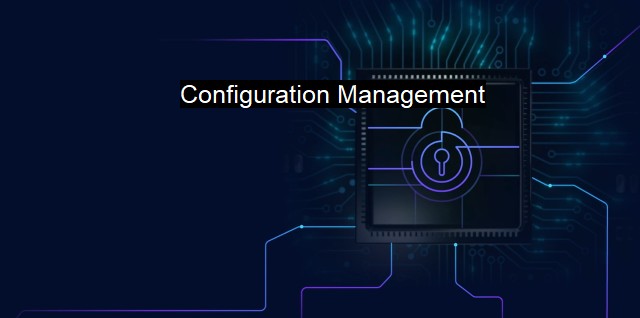What is Configuration Management?
Managing Cybersecurity and Antivirus systems: Configuring for Improved Security and Functionality
Configuration management, with refers to a structured process for managing the overall integrity, functionality, performance, and security of a network over time. The key aim of configuration management is to ensure that the current design and build state of the network is known, good, and trusted in its capacity against potential cyber threats.Certainly, the threats in the cyberspace are continuously evolving, amplifying the need for a robust configuration management strategy that not only identifies potential vulnerabilities but also ensures a timely remedy. Understanding all aspects of the system and developing appropriate preventative measures is paramount to an effective cybersecurity program. This highlights the need for an extensive and comprehensive configuration management strategy that focuses on ensuring network and information security.
Primarily, configuration management models involve processes like identification, control, status accounting, and audit verification. The initial stage, identification, is characterized by an inventory of all valuable assayts and thorough documentation of hardware, software, and associated components. This can also include mapping their interconnections and interaction with extended digital environment.
Control, on the other hand, revolves around managing changes made to various system components and ensuring that no unauthorized or detrimental footprints jeopardize the system's functionality. Effective control mechanisms leave no room for accidental compromises, as alterations— either for updates or replacements— are extensively reviewed and tested before implementation.
Status accounting is the tracking and recording of all the changes in the system. From the initial point of deployment up until the present, the status accounting mechanisms operate to create a comprehensive history of the system's evolution, identifying when and why specific changes were made. Intricacies captured in these recordings can prove instrumental in detecting potential impending threats and making necessary risk predictions.
Audit verification encompasses regular review and balancing checks to determine the real-time condition against the intended state of the system configurations. Using benchmark configurations that reflect best practices and minimal vulnerabilities ensures that the system checks are set to meet optimum levels of cybersecurity. In case of a mismatch, immediate adjustments are initiated.
Configuration management plays a critical role in managing antivirus systems too. Antivirus configurations must be regularly checked and updated in parallel with shifts in the virus landscape. Updating and maintaining antivirus definitions is a fundamental procedure in configuration management, highly crucial in securing systems.
Configuration management, though demanding, has far-reaching benefits for cybersecurity. An efficient configuration management strategy is a cornerstone for system integrity and consistent operation. Such an infrastructure, intent on identifying and rectifying discrepancies, significantly reduces the risk for security breaches, thus inhibiting detrimental interference or data compromise.
Configuration management enables swift disaster recovery, as this complete and accurate depiction of the system details allows for expedited problem acknowledgments as well as resolution, accelerating time-to-recovery metrics. Configuration management, therefore, becomes a pivotal practice reducing downtime, enabling system stability, and enhancing overall infrastructure resilience.
Configuration management cannot be overlooked in the context of cybersecurity and antivirus. It is an essential cog in the intricate machinery of network security. Its commitment to maintaining network consistency against attacks, coupled with its stance on antivirus administration, compels a decidedly effective safeguard against the burgeoning typologies of cyberspace threats. So, a labyrinthine process it may seem, configuration management is an unremitting requirement in the fight towards securing digital territories.

Configuration Management FAQs
What is configuration management in the context of cybersecurity and antivirus?
Configuration management refers to the process of managing and maintaining the configuration of security tools such as antivirus software. This includes ensuring that the software is up to date, that all necessary security patches have been applied, and that the software is properly configured to provide maximum protection against threats.Why is configuration management important in cybersecurity and antivirus?
Configuration management is important because it ensures that security tools are functioning optimally and providing the best possible protection against threats. This includes ensuring that antivirus software is properly configured to detect and respond to the latest threats, and that all necessary updates and patches have been applied to ensure that the software is up to date.What are some best practices for configuration management in cybersecurity and antivirus?
Some best practices for configuration management in cybersecurity and antivirus include implementing automated update and patching processes to ensure that software is always up to date, regularly reviewing and updating security configurations to ensure that they are still relevant and effective, and using centralized management tools to ensure that security settings are consistent across all systems.What are some common challenges that organizations face with configuration management in cybersecurity and antivirus?
Some common challenges that organizations face with configuration management in cybersecurity and antivirus include managing configurations across multiple systems and platforms, ensuring that configurations are consistent across all systems, and keeping up with the rapidly changing threat landscape. Additionally, because antivirus software relies on threat intelligence to identify and respond to threats, misconfigured or outdated security settings can lead to missed threats and increased risk.| | A | | | B | | | C | | | D | | | E | | | F | | | G | | | H | | | I | | | J | | | K | | | L | | | M | |
| | N | | | O | | | P | | | Q | | | R | | | S | | | T | | | U | | | V | | | W | | | X | | | Y | | | Z | |
| | 1 | | | 2 | | | 3 | | | 4 | | | 7 | | | 8 | | |||||||